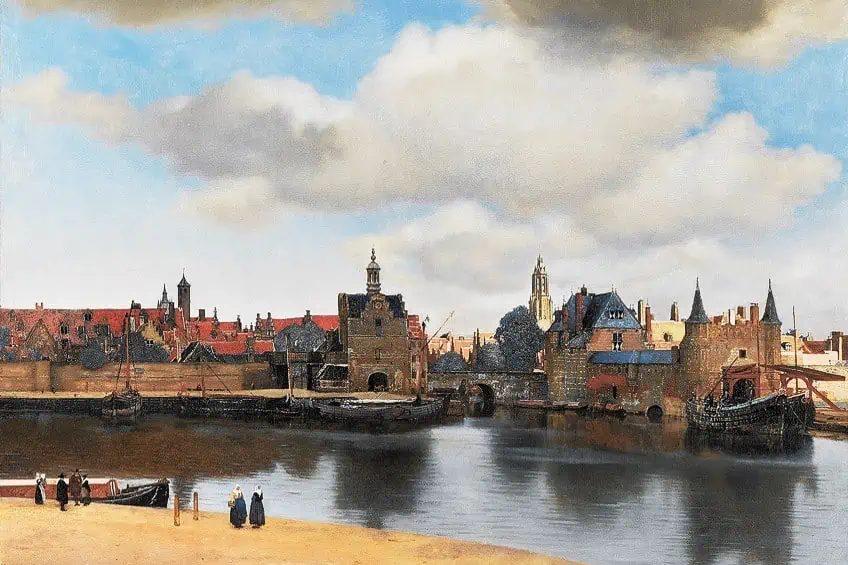Dutch Baroque – Exploring the Golden Age of Glory
Dutch Baroque art is among the most intriguing and rich art styles of the 17th-century Netherlands that propelled artists and architects of the Dutch Golden Age to the forefront of their respective fields. From figures like Vermeer and Hals to Rembrandt, the Dutch Baroque era is unparalleled to any other art movement that had a profound impact on the fields of painting and architecture. In this article, we will explore the history of Dutch Baroque styles across painting and architecture, including important Dutch Baroque art characteristics that will help you grasp the visual languages of the movement. Read on to discover the origin and impact of Dutch Baroque art!
Exploring the Origins of Dutch Baroque Art
The Dutch Golden Age was a period of widespread artistic change in the 17th century that found its roots in the Netherlands. A product of this period was Dutch Baroque art, which was shaped by many unique characteristics that soon became incredibly influential. From intricate realism to the dramatic flair of chiaroscuro techniques, Dutch Baroque art was focused on the depiction of everyday life. This included various genres of painting, which we will dive into later on.
One type of painting style called genre painting was among the most popular genres to thrive in the Dutch Golden Age and was largely driven by the merchant class, whose affluence was flaunted by commissioning such paintings.
So, how did the Dutch Baroque style begin? The use of the Dutch Baroque style took on many forms across the Netherlands and was best captured in cities like Delft, Amsterdam, and Haarlem, where prolific painters like Rembrandt and Hals excelled in depicting the nuances of 17th-century life. From public spaces to guild halls, these artworks were hung in many spaces to reflect the societal values of the time and immortalize the culture of the Dutch Republic in its artistic prime.
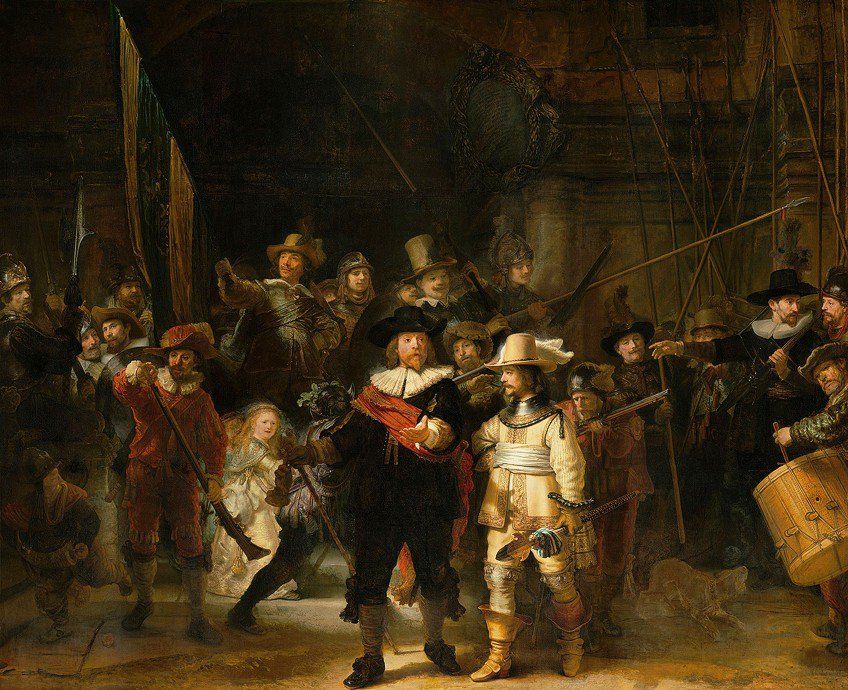 The Night Watch (1642) by Rembrandt; Rembrandt, Public domain, via Wikimedia Commons
The Night Watch (1642) by Rembrandt; Rembrandt, Public domain, via Wikimedia Commons
As such, one can also note the influence that the style had outside of the Netherlands, as it sculpted the sensibilities of many artists across Europe. Particularly the genre of Dutch still-life led to the development of similar styles in Spain and France for instance and laid the groundwork for art that could be “relatable”.
What are the main Dutch Baroque art characteristics? The Dutch Baroque style is defined by several features that focus on texture, precision, reflections, and lighting.
In painting, it can be pinpointed to the use of depth and an emphasis on the relationships between light, shadow, and form. These features contributed to a sense of realism in the work that invited a greater emotional impact. Additionally, the depiction of ordinary people in daily activities with sumptuous landscapes also showcases the tendency for the style to emphasize secular subjects and the admiration of a growing society.
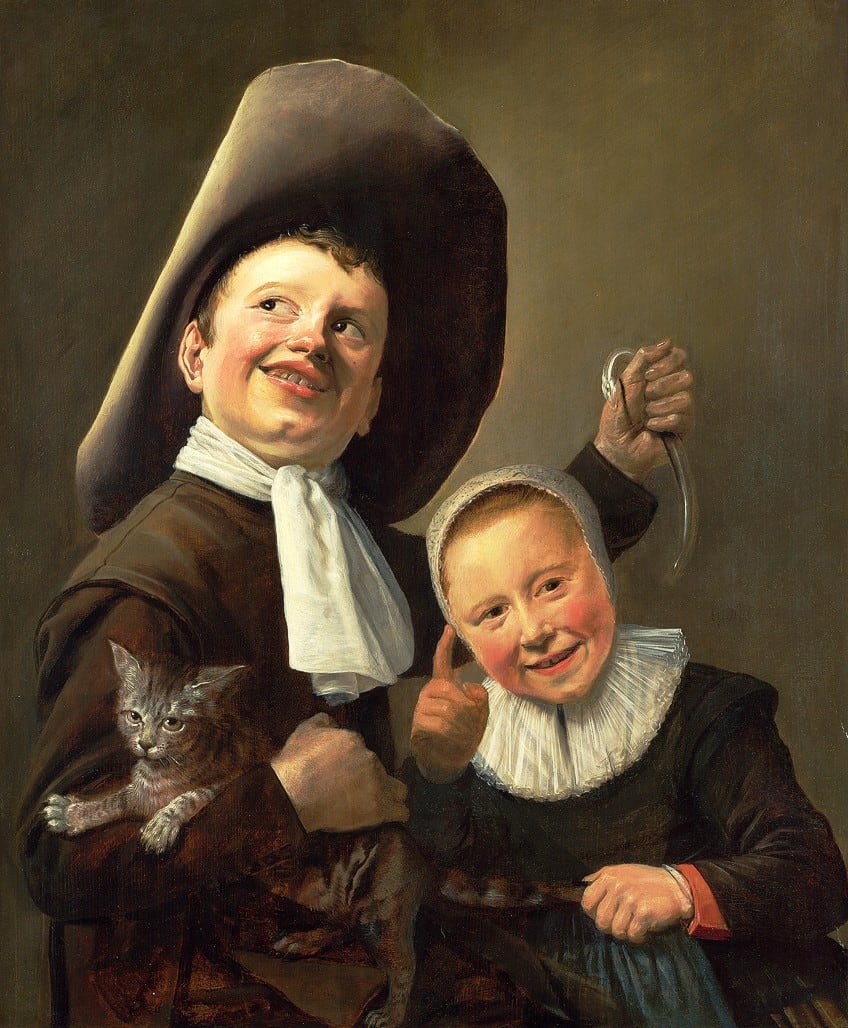
It was especially in Holland, which was among the seven provinces of the Netherlands, that Dutch Baroque art thrived. Holland became one of the wealthiest nations in all of Europe, which spurred much affluence among Dutch groups who also happened to embrace the arts. Artists had more opportunities to create art, given that more than four million paintings were created during this time. Furthermore, with the rise of Calvinism in place of Catholicism, Dutch Baroque art had favorable conditions to grow since Calvinism allowed the bourgeoisie to become the leading patrons of art and shifted the societal focus on art from religious themes to secular themes to adorn the homes of the wealthy.
Major Influences on the Dutch Golden Age
The Dutch Golden Age was shaped by a period of cultural and economic change and growth that was influenced by the religious and political dynamics of its time. Strong influences on the emergence of the Dutch Golden Age and the resultant birth of Dutch Baroque art was the rebellion of the Protestant seven provinces against Catholic Habsburg Spain in 1568. This marked the beginning of the eight-year war for Dutch independence, which saw religious tension and struggle.
The wars led to a heightened sense of Dutch nationalism, resulting in the formal declaration of Dutch independence in 1581 and official recognition in 1648. It is thus commonly agreed that religion played a key role in influencing the societal values and views of art at this time.
When the Dutch Reformed church emerged, there was more emphasis on education and an individual study of the Bible, which birthed intellectual hubs like the University of Leiden. This led to the development of scientific thought and philosophy with figures like Baruch Spinoza, Jan Adriaanszoon Leeghwater, and Christiaan Huygens contributing to multiple fields in significant ways. At the same time, the socio-economic climate of the Dutch Republic saw the tragedy of Antwerp, an important economic center, crash while under Spanish control in 1585.
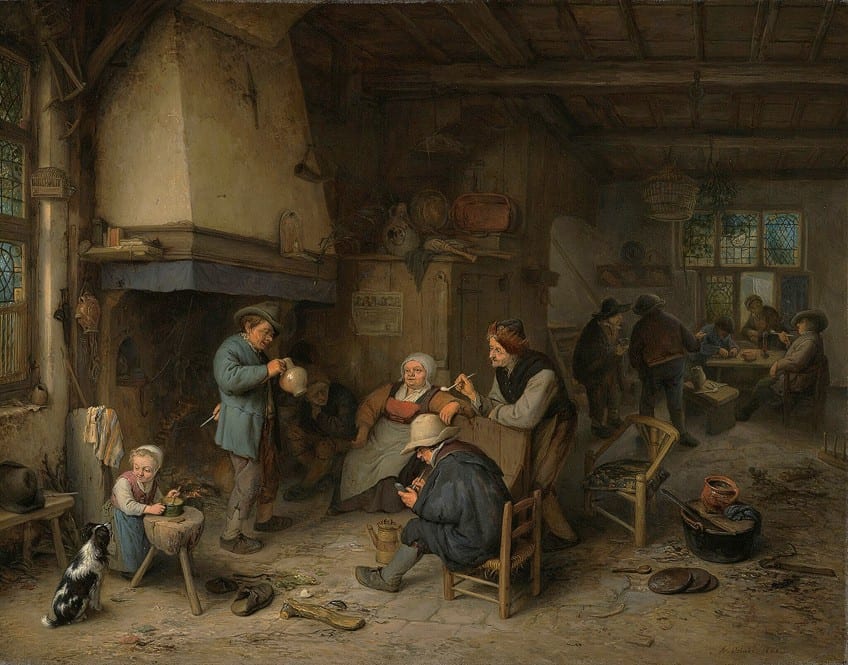
This led to an influx of Protestant laborers, refugees, and entrepreneurs to Amsterdam, resulting in cultural exchange and the diversification of society. Another major influence of this period was the role of the Dutch East India Company, which was established in 1602 and served as the backbone of Dutch wealth driven by world trade. The multinational corporation pioneered the first stock exchange, which boosted economic growth.
Dutch traders exchanged goods extensively with traders in Asia and Europe while gaining their wealth from commodities like porcelain, spices, and botanical specimens, all products of colonialism.
A Brief History of Dutch Baroque Architecture
Dutch Baroque art also encompasses architecture, which saw a drastic change in the way architects approached their craft in the 17th century. Dutch Baroque architecture is a specific subcategory of the Baroque style that thrived across the Dutch Republic and its colonies and was deeply grounded in democratic values, styles from classical antiquity, and elegant designs. Dutch Baroque architecture was pioneered by architects such as Hendrick de Keyser, whose designs influenced the development of buildings like the Noorderkerk and Westerkerk in Amsterdam.
It is important to take note that the Dutch Republic was a powerful European power in the 17th century that saw many renowned architects carry out important projects across Northern Germany, Scandinavia, and Russia.
One of the most enduring styles from Dutch Baroque architecture was the red-brick gabled houses, which was a product of Dutch colonial architecture that continues to stand in places like Willemstad, and Curaçao in various colors. Architecture across the Catholic-influenced south and the Protestant north saw changes that embraced the appeal of Northern Italian Renaissance and Mannerist forms that stood out from the Roman High Baroque style in other regions.
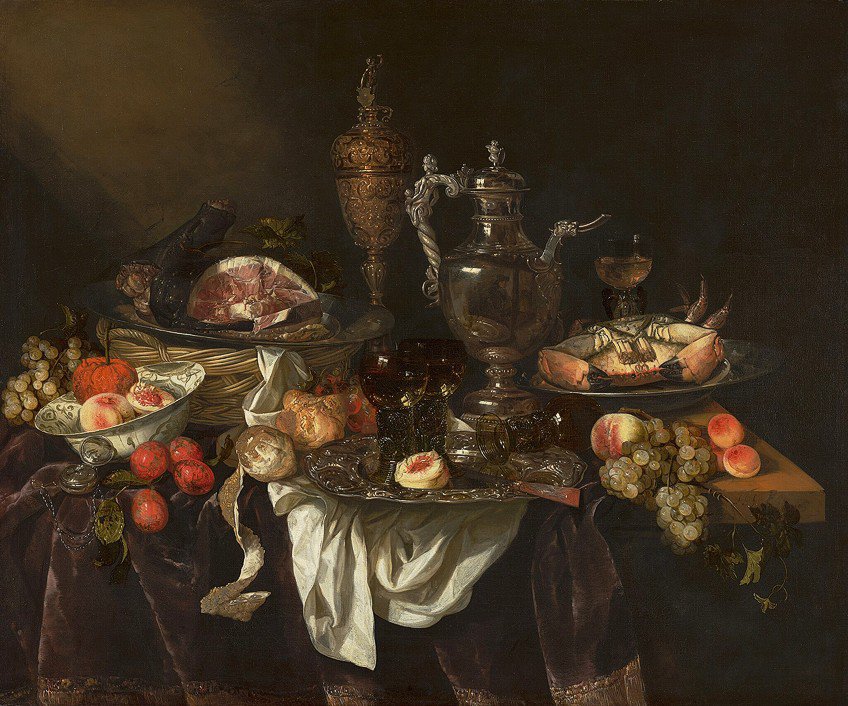
A few other notable architects from the mid-17th century include Pieter Post, who further developed the concepts of De Keyser and Jacob van Campen. These two Dutch Baroque architects paved the path for the Classicism of Christopher Wren’s works and included features such as central pediments, giant order pilasters, and striking steeples. Some of the most prominent buildings of this era were Amsterdam’s governmental buildings and Maastricht’s city hall, which showcased an interesting fusion of architectural elements.
The Huis ten Bosch and Mauritshuis from the House of Orange is one such example that showed off a more symmetrical and modest design that was more similar to burgher mansions as opposed to extravagant palaces.
Famous Examples of Dutch Baroque Architecture
Now that you have an informed idea of the Dutch Baroque art style and its history in Dutch architecture, you can browse through a selection of Dutch Baroque architecture examples that have remained steady for centuries.
Westerkerk (Est. 1631)
| Architect Name | Hendrick de Keyser (1565 – 1621) |
| Date | 1631 |
| Size (m2) | 2,500 x 841 |
| Where It Is Housed | Prinsengracht 281, Amsterdam, Netherlands |
Also located in the Netherlands, the Westerkerk stands as an iconic representation of Dutch Baroque architecture. The church was built between 1620 and 1631 and designed by the prolific architect Hendrick de Keyser. What makes the church so Baroque is its use of classical elements like the gabled roofs, central pediments, and grand pilasters.
The building is recognized as the largest Protestant church in the Netherlands and stands as a symbol of the Dutch Republic as a cultural landmark.
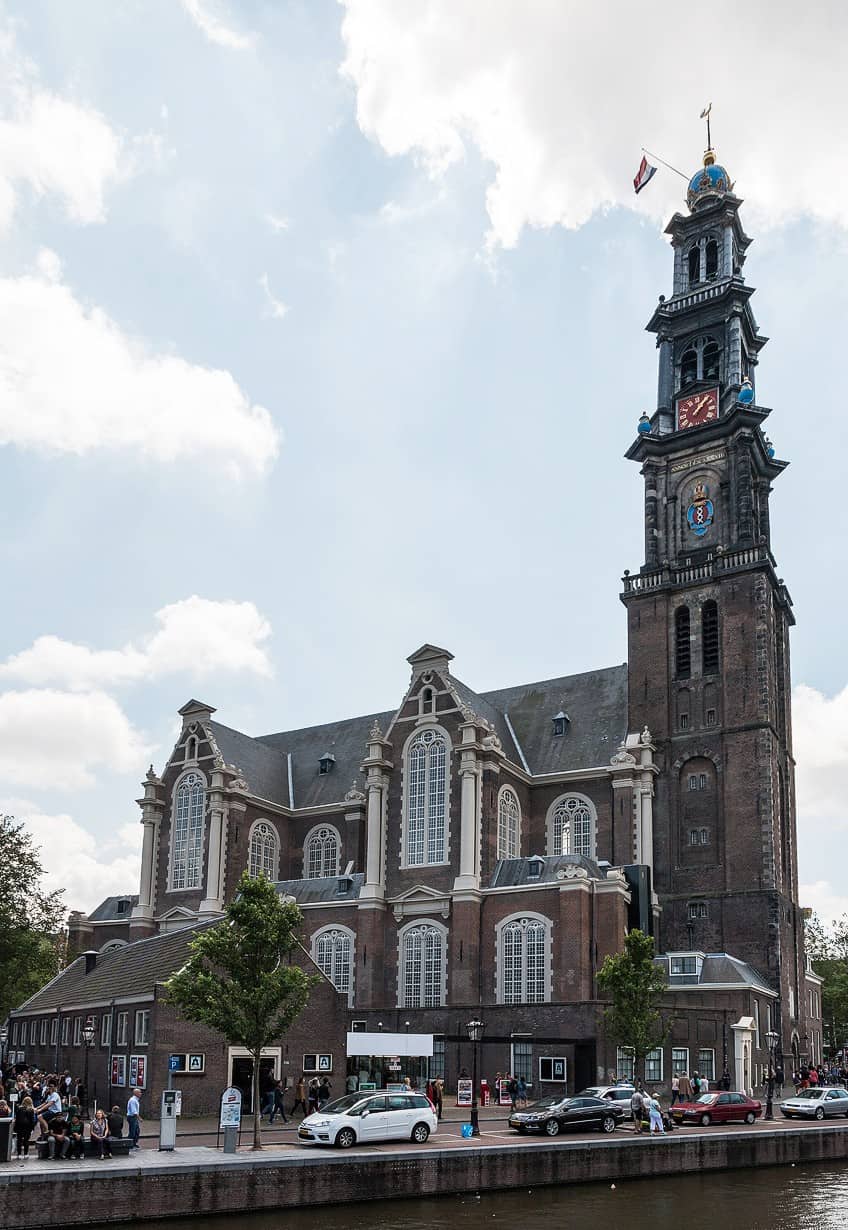
Another interesting fact about the church is that it contains an organ with paintings created by the Dutch Golden Age painter Gerard de Lairesse. It is also recorded that the famous painter Rembrandt was once buried in an unmarked grave under a tombstone at Westerkerk and after 20 years, his remains were removed and destroyed elsewhere.
Het Loo Palace (Est. 1686)
| Architect Name | Daniel Marot (1661 – 1752), Johan van Swieten (1635 – 1661), and Jacobus Roman (1640 – 1716) |
| Date | 1686 |
| Size (m2) | 36,042 |
| Where It Is Housed | Koninklijk Park 1, Apeldoorn, Netherlands |
One of the most famous examples of Dutch Baroque architecture is preserved in the walls of the Het Loo Palace, which is located in Apeldoorn, in the Netherlands. The palace expresses the elegance and grandeur of the late 17th century, which was commissioned by Stadtholder William III and Queen Mary II of England as a display of power.
The construction on the building began in 1684 and two years later, it was complete.
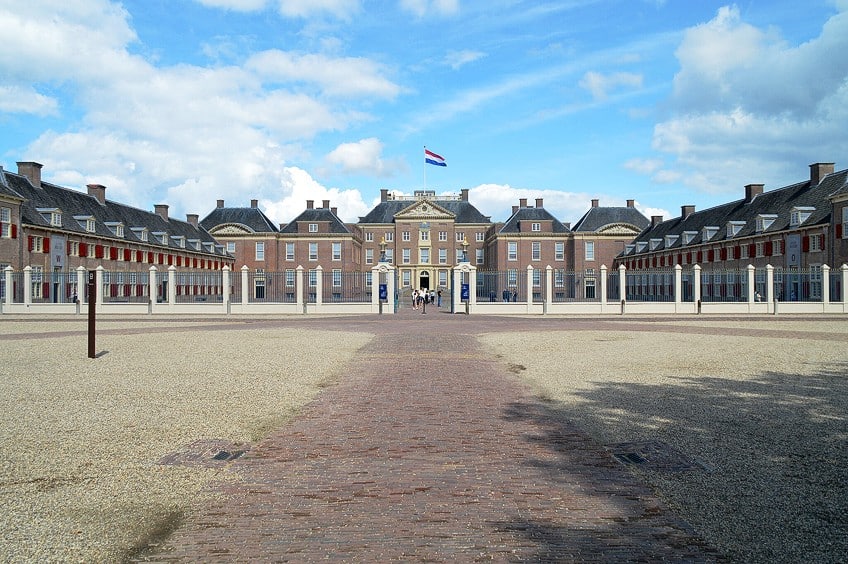
The famous Dutch Baroque palace was designed by three architects, namely, Daniel Marot, Johan van Swieten, and Jacobus Roman, and is a classic example of the use of gabled roofing and Baroque decoration that complements the symmetrical layout of the palace. The historical significance of the palace is attributed to its function as a royal residence, which was also an emblem of the Dutch monarchy during the Golden Age.
National Maritime Museum (Est. 1916)
| Architect Name | Daniël Stalpaert (1615 – 1676) |
| Date | 1916 |
| Size (m2) | Unavailable |
| Where It Is Housed | Kattenburgerplein 1, Amsterdam, Netherlands |
Originally designed to serve as a shipyard in 1656, the famous Het Scheepvaartmuseum, in the Netherlands is an example of Dutch Baroque architecture that captures the essence of the 17th-century style. The museum’s first design was created by a leading architect named Daniel Stalpaert, who intended to emphasize the symmetrical layout and ornate details of the Dutch Baroque style. The museum is most famous for its maritime history exhibitions and is recognized as a cultural and architectural beauty that symbolizes the Dutch Republic’s naval power during the Golden Age.
The museum also continues to attract visitors of up to 300,00 per year.
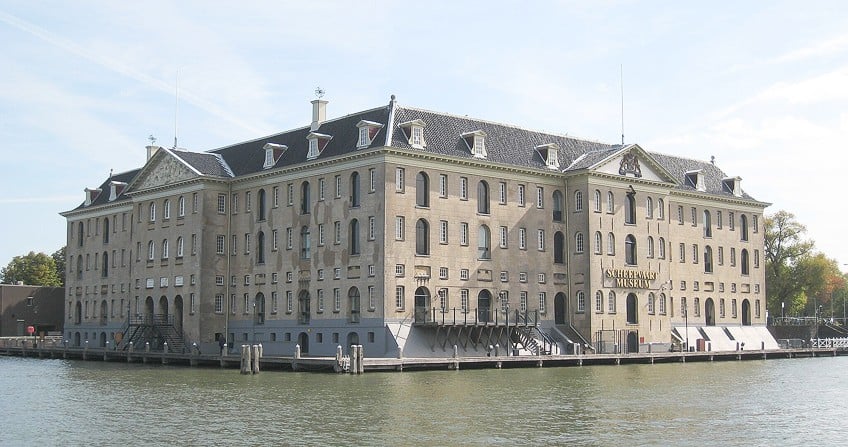
Common Genres in Dutch Baroque Painting
In Baroque Dutch painting, there were four main genres that artists used to depict scenes from everyday life. This manifested in portraiture, landscape painting, still-life, and genre painting. Below, we will discuss each of the genres and their contribution to Baroque Dutch painting.
Portraiture
In the bustling Dutch Baroque art scene of the 17th century, portraiture was one such genre that thrived among painters like Frans Hals, Rembrandt van Rijn, and Johannes Vermeer. Portraiture encouraged the exploration of personal identity, cultural diversity, and individuality across the Dutch Republic, which saw pioneering portrait painters succeed in capturing the heart and soul of their subjects.
From common citizens to wealthy merchants, portrait painters applied their precise technical skills to add psychological depth to Baroque portraits and establish symbols of social status for many individuals.
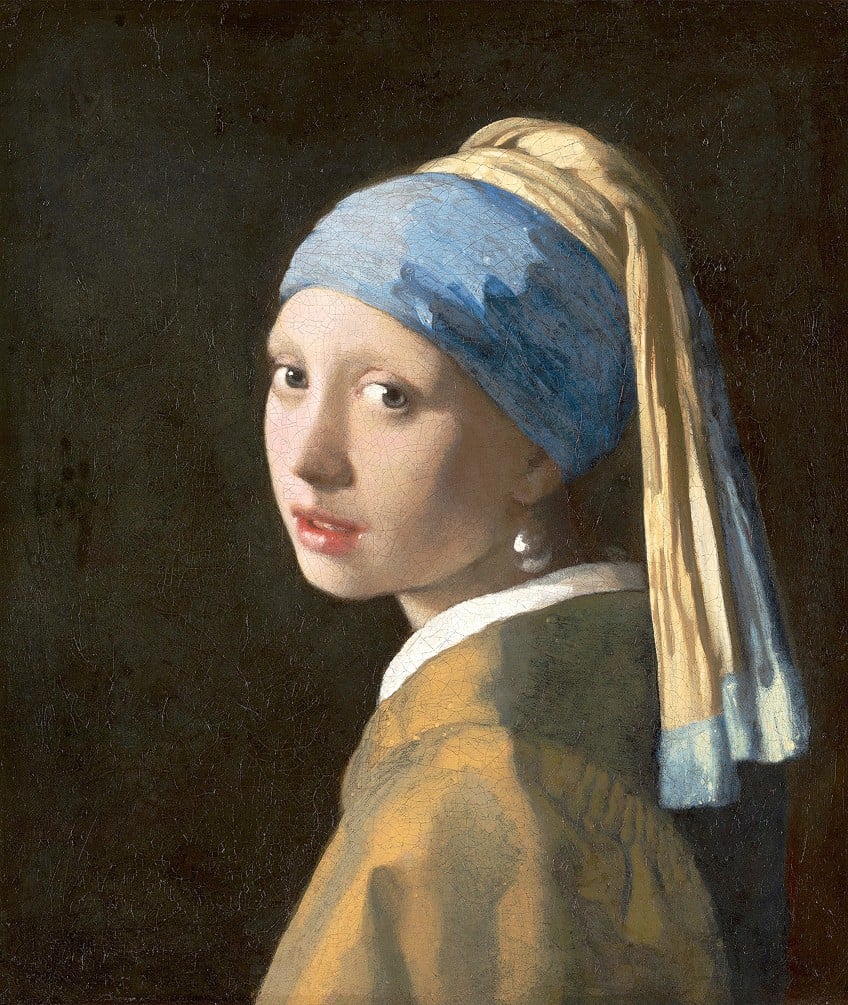
Vital to many wealthy Dutch groups was the ability to show off their wealth and accomplishments through portrait paintings, which became symbolic objects. Artists who specialized in portrait painting enhanced their portraits using realism and chiaroscuro techniques. Portraits were also commissioned by the rising middle class to become family relics that reflected the pride of the sitters who modeled for Dutch Baroque painters.
Still-Life
Another common genre of Dutch Baroque painting was still life, which was prominent throughout the 17th century. Still-life painting demonstrated the prosperity of the century aided by scientific appreciation and admiration for life. Famous still-life painters like Willem Claeszoon Heda, Pieter Claesz, and Rachel Ruysch created many meticulous arrangements and compositions that reflected elements of society, from scientific instruments to exotic fruits, curious objects, and floral arrangements.
Still-life in Dutch Baroque art was very much a symbol of physical wealth that was embedded with vanitas symbolism and the wealth gained from Dutch trade and exploration.
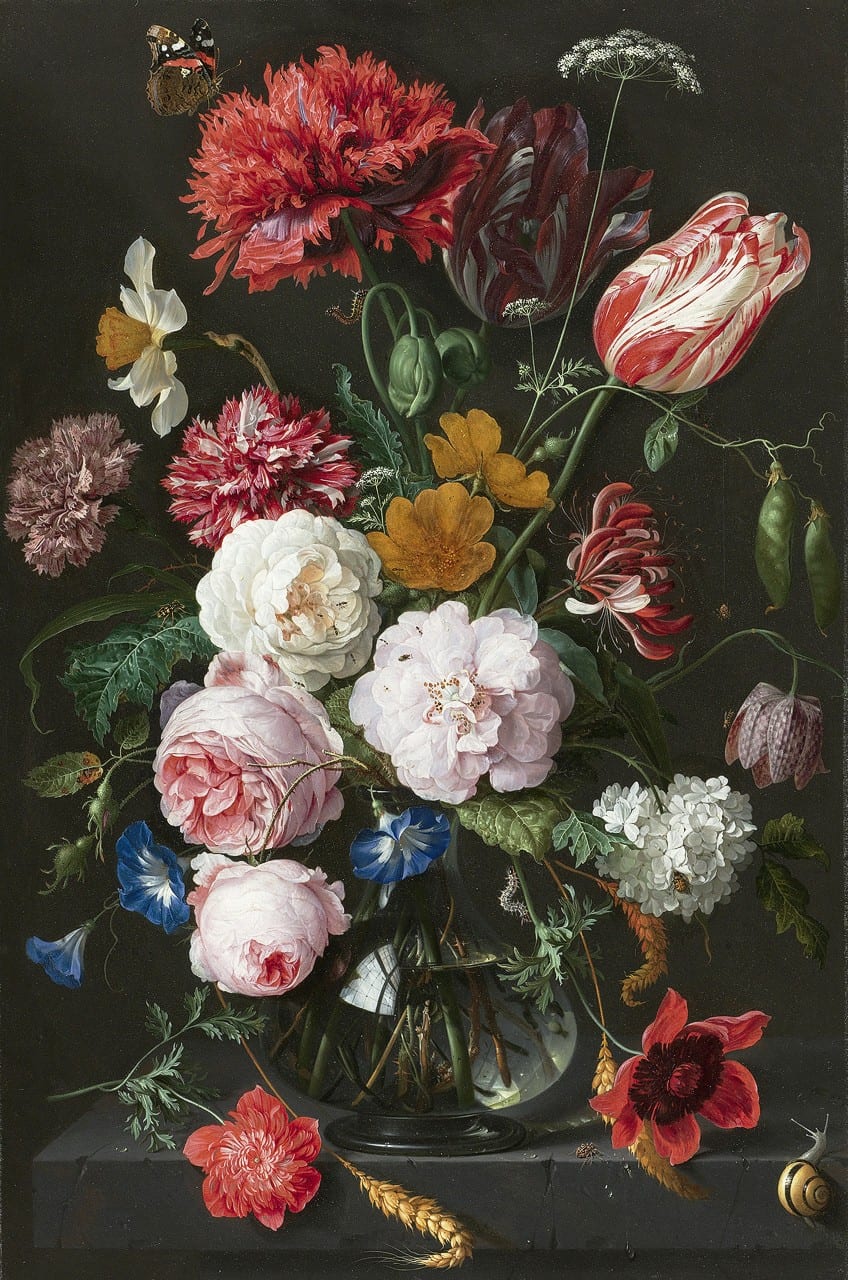
What made Dutch Baroque still-life paintings so unique were their extraordinary details such as textures, light effects, and reflections, which were rendered with incredible precision. Many Dutch Baroque still-life painters also specialized in specific sub-genres, such as floral still-lifes and vanitas compositions, which eventually became decorative symbols in the households of affluent patrons.
Genre Painting
As mentioned earlier, genre painting is one such genre that thrived in the Dutch Baroque art scene. Genre paintings mirrored the values of the middle class and were characterized by images of market interactions, domestic scenes, and other social interactions that were rendered with a high degree of realism. Famous Dutch Baroque painters in genre painting include Johannes Vermeer, Jan Steen, and Gerard ter Borch, who were all celebrated for their attention to the smallest of details in paintings that convey moral or allegorical messages.
Dutch Baroque genre paintings also sought to subtly expose the complexities of human behavior and societal norms while focusing on themes of education, family, and commerce.
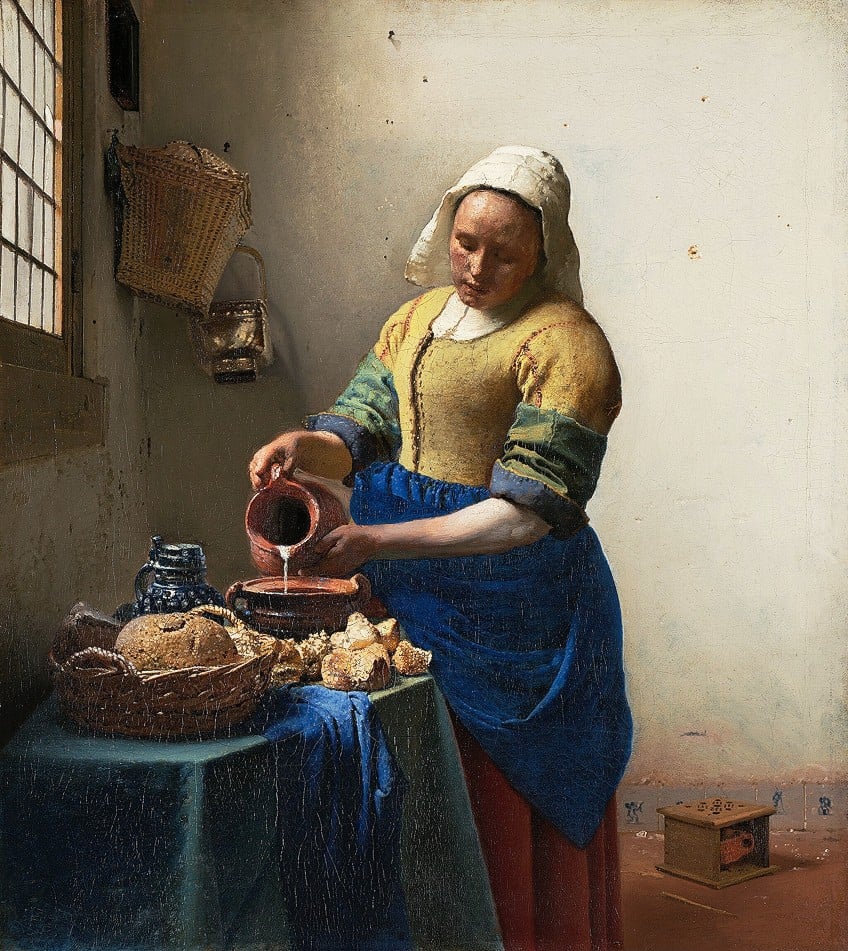
Landscape Painting
The genre of landscape painting certainly enriched the Dutch Baroque art scene as a tool to convey the nation’s profound relationships with its natural environment and maritime achievements. Famous Dutch Baroque painters of the landscape genre included Jacob van Ruisdael, Aelbert Cuyp, and Meindert Hobbema, whose depictions of the Dutch countryside, picturesque landscapes, and vast coastlines demonstrated the painterly prowess of Dutch artists.
Paintings of landscapes rendered in the Dutch Baroque style were defined by their use of atmospheric effects, stark detail, the economic growth of the Republic, and an emphasis on the harmony between man and nature.
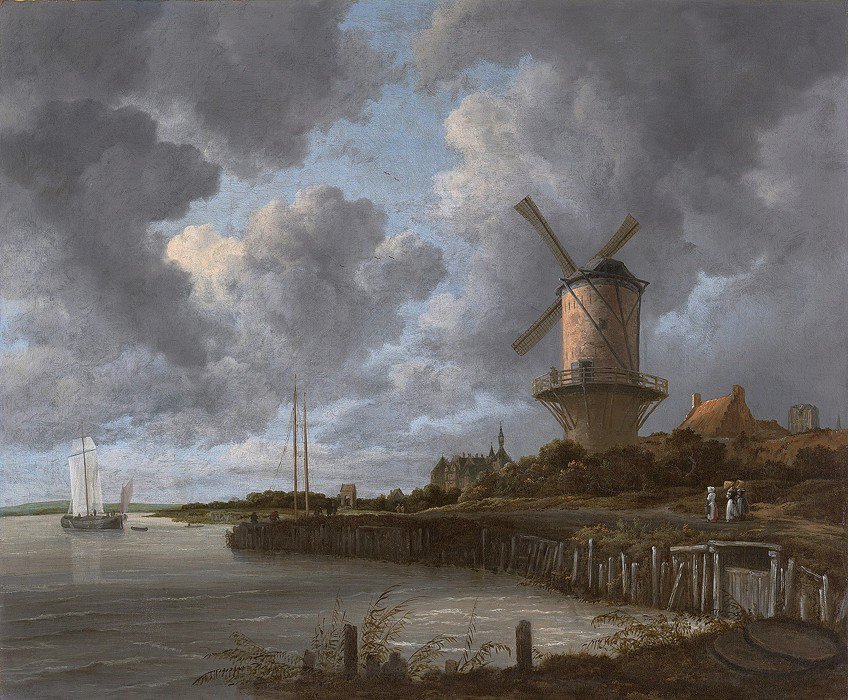
Popular scenes included maritime and agricultural scenes that displayed an appreciation for the Dutch homeland. As such, landscape painting was more than just a pretty stretch of open land, it was a symbol of national identity and an admiration for the land.
Iconic Examples of Dutch Baroque Painting
Now that you are familiar with the history and development of Dutch Baroque art in painting and architecture, you can appreciate the realism and precision embedded in these famous Dutch Baroque paintings. Hopefully, you will also be able to spot the different ways that these famous painters have used the various Dutch Baroque art characteristics!
The Lute Player (1623) by Frans Hals
| Artist Name | Frans Hals (1582 – 1666) |
| Date | 1623 |
| Medium | Oil on canvas |
| Dimensions (cm) | 70 x 62 |
| Where It Is Housed | Musée du Louvre, Paris, France |
This renowned genre painting by Frans Hals is among the most famous Dutch Baroque paintings of the Golden Age. The oil painting was created around 1623 and depicts a lively-looking lute player, whose eyes appear to glance sideways while he plays the instrument. The painting is an example of how such genre scenes were capable of conveying movement and vibrancy through color, as seen in the jester’s costume, and the placement of the lute’s sound hole.
Hals also piloted the use of a rougher technique in the Dutch Baroque style through loose brushwork to heighten the sense of motion.
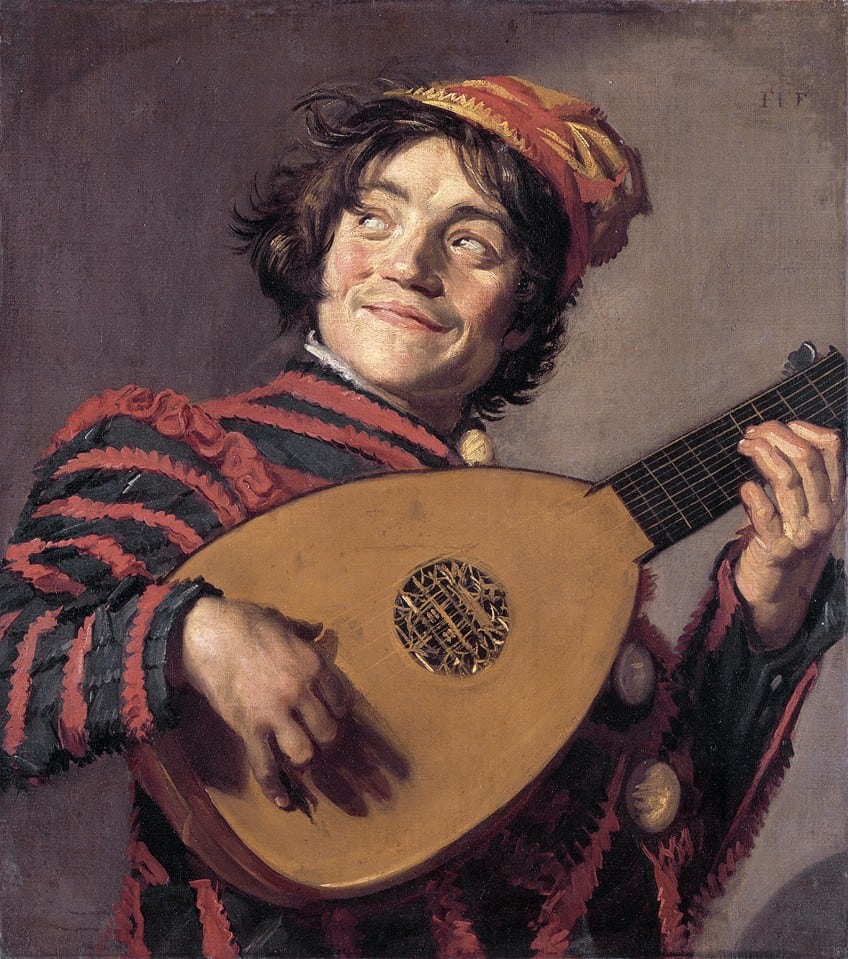
The Lute Player was inspired by an earlier work by Dirck van Baburen, which naturally portrayed the musician. Since Hals’ creation, the painting has been copied by many artists, including David Bailly and Adriaan de Lelie, which proves the influence of Hals’ Dutch Baroque genre painting style.
The Anatomy Lesson of Dr. Nicolaes Tulp (1632) by Rembrandt van Rijn
| Artist Name | Rembrandt Harmenszoon van Rijn (1607 – 1669) |
| Date | 1632 |
| Medium | Oil on panel |
| Dimensions (cm) | 170 x 216 |
| Where It Is Housed | Mauritshuis, the Hague, Netherlands |
The Anatomy Lesson of Dr. Nicolaes Tulp is widely recognized as a masterpiece of Rembrandt van Rijn’s expert observation on the dissection of human anatomy in a medical procedure scene. Rembrandt’s focus was largely placed on the depiction of a real event demonstrated by the appearance of dynamic action. This was captured remarkably in the depiction of Dr. Tulp, who holds forceps and demonstrates the human arm while several men observe him.
The scene conveys a very real sense of psychological tension in a moment that depicts a graphic documentary of surgeons.
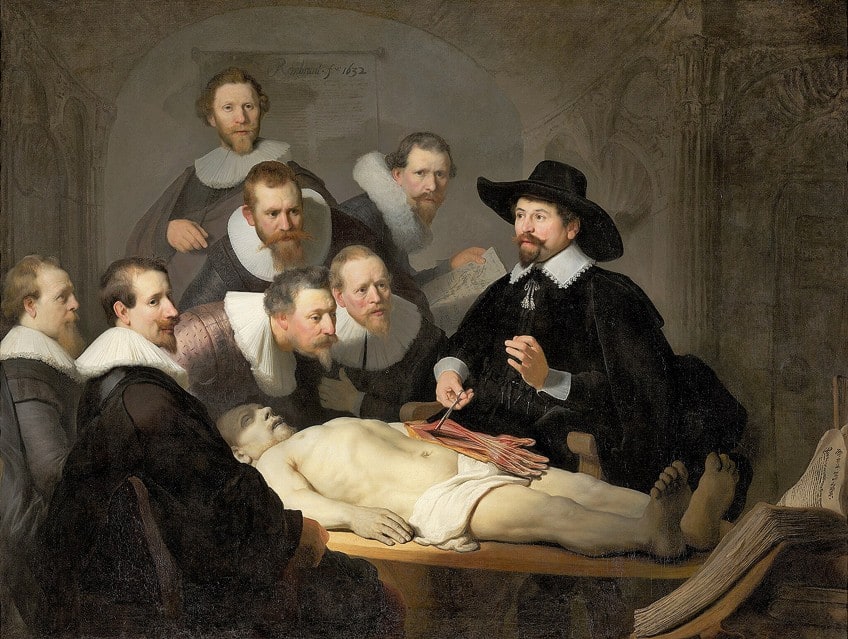
The painting was commissioned by the Amsterdam Guild of Surgeons to depict the surgeons’ mission for the greater good of humanity amid their social status. Rembrandt’s application of Dutch Baroque painting techniques can be seen in his dramatic use of contrast and lifelike portraiture, which influenced later artists like Thomas Eakins and Édouard Manet.
View of Delft (c. 1660 – 1661) by Johannes Vermeer
| Artist Name | Johannes Vermeer (1632 – 1675) |
| Date | c. 1660 – 1661 |
| Medium | Oil on canvas |
| Dimensions (cm) | 96.5 x 115.7 |
| Where It Is Housed | Mauritshuis, the Hague, Netherlands |
View of Delft is a famous landscape painting by Dutch painter Johannes Vermeer, who created the oil painting around 1660. His cityscape is recognized as the pinnacle of 17th-century Dutch Baroque painting that captivates viewers with its use of light and shadow and tranquil rendering of the Kolk harbor.
Vermeer exercised a great deal of precision to capture the details of the cityscape, from the still waters and boats to the New Church tower to depict the serenity of the quayside.
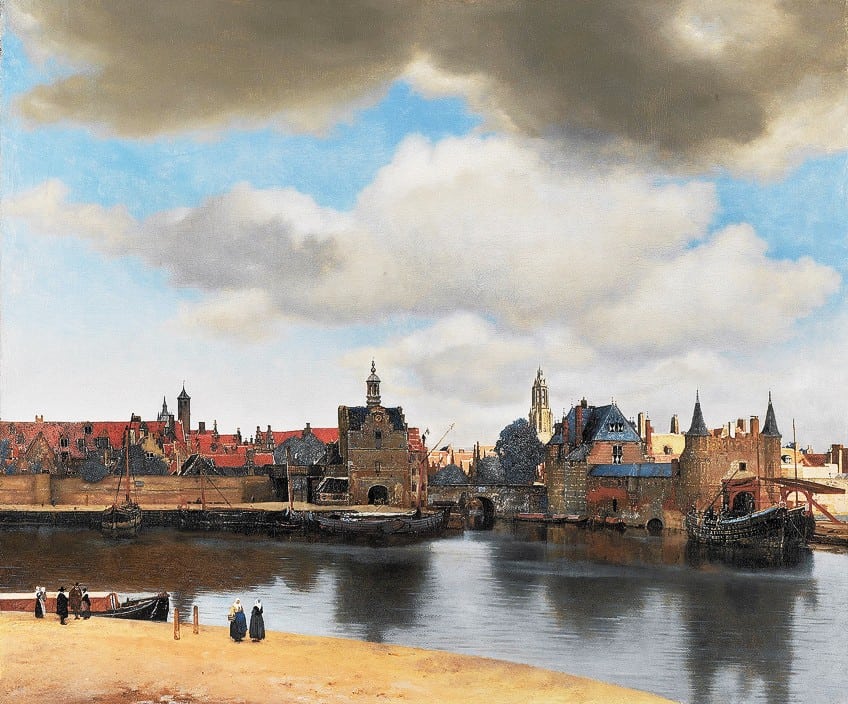
His inclusion of small human interaction also reduces the stress on one’s mind as Vermeer strategically depicted groups of people casually strolling and used smoother layers of sunlight to explore texture. The painting also moved the famed novelist Marcel Proust, who identified it as one of the world’s most beautiful paintings in his 1908 work Remembrance of Things Past.
The dramatic and symbolic art style of the 17th-century Dutch Republic was a beacon to many later artists in Europe who sought to replicate such precise details when exploring realism. Dutch Baroque artists have highlighted the importance of strategically using light, shadow, and everyday scenes to pioneer techniques that would reverberate across Europe. We hope that you have enjoyed learning more about Dutch Baroque art through our selection of famous Dutch Baroque artworks, artists, and architectural examples.
Frequently Asked Questions
What Is Dutch Baroque Art?
The artistic period known as the Dutch Golden Age includes the subcategory known as Dutch Baroque art, which is described as a 17th-century art movement across painting and architecture. Dutch Baroque art encompasses genre, landscape, still-life, and portraiture in painting, as well as architectural developments in palaces, churches, and civic buildings.
What Are the Main Characteristics of Dutch Baroque Painting?
The primary characteristics of Dutch Baroque painting include elements of tension, psychological complexity, movement, drama, grandeur, rich colors, and the use of strong contrasts. Figurative works seen in genre painting also include figures with no specific identity to depict quotidian life.
What Is the Dutch Baroque Style in Architecture?
In architecture, the Dutch Baroque style was characterized by the presence of austere exteriors, common materials, and features like columns, symmetrical layouts, elaborate staircases, and sculpted interiors.
Jordan Anthony is a Cape Town-based film photographer, curator, and arts writer. She holds a Bachelor of Art in Fine Arts from the University of the Witwatersrand, Johannesburg, where she explored themes like healing, identity, dreams, and intuitive creation in her Contemporary art practice. Jordan has collaborated with various local art institutions, including the KZNSA Gallery in Durban, the Turbine Art Fair, and the Wits Art Museum. Her photography focuses on abstract color manipulations, portraiture, candid shots, and urban landscapes. She’s intrigued by philosophy, memory, and esotericism, drawing inspiration from Surrealism, Fluxus, and ancient civilizations, as well as childhood influences and found objects. Jordan is working for artfilemagazine since 2022 and writes blog posts about art history and photography.
Learn more about Jordan Anthony and about us.
Cite this Article
Jordan, Anthony, “Dutch Baroque – Exploring the Golden Age of Glory.” artfilemagazine – Your Online Art Source. December 27, 2023. URL: https://artfilemagazine.com/dutch-baroque/
Anthony, J. (2023, 27 December). Dutch Baroque – Exploring the Golden Age of Glory. artfilemagazine – Your Online Art Source. https://artfilemagazine.com/dutch-baroque/
Anthony, Jordan. “Dutch Baroque – Exploring the Golden Age of Glory.” artfilemagazine – Your Online Art Source, December 27, 2023. https://artfilemagazine.com/dutch-baroque/.


